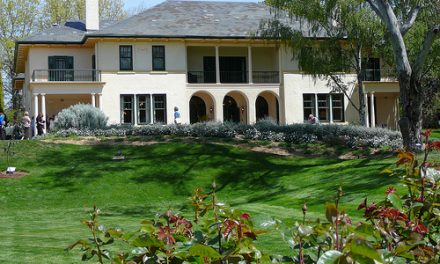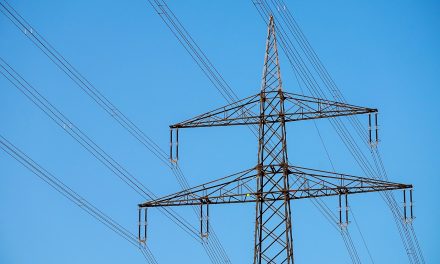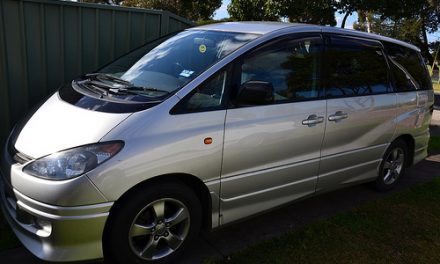Fairfax Media had recently reported that a family of man-made chemical compounds known as the Per- and Poly-fluoroalkyl substances (PFAS) is linked to cancers in at least 21 children from the Tartan High School in the US state of Minnesota. These cancer victims live in Oakdale, a town built by the global chemical giant 3M and where the water supply was contaminated by these PFAS chemicals for years. (Ref 1, 2. 3)
PFOS and PFOA
In the 1940s, 3M scientists synthesized two novel compounds with unusual properties. Formed by bonding fluorine and carbon, they are stronger than some rocks, can move long distances, are virtually indestructible in the environment, and repel grease, oil and water. Perfluorooctane sulfonate (PFOS) became the key ingredient in Scotchguard. Perfluorooctanoic acid (PFOA) was sold to Dupont for the manufacture of Teflon cookware. These two chemicals are the best known of the PFAS family of compounds. The PFAS business was lucrative, yielding more than A$643 million annually before 3M announced in May 2000 that it would stop producing PFOS and would work to phase out PFOA. (Ref 1, 2. 3)
Last year, DuPont reached a $US670 million settlement with residents living near its Teflon manufacturing plant in Ohio, West Virginia, after an expert health panel concluded that there is a likely association between their drinking water and six health conditions, including kidney and testicular cancer. (Ref 1)
According to Fairfax Media, a $5billion lawsuit in Minnesota had brought to light thousands of internal 3M documents and how the company attempted to conceal the public health impacts of its products, undermine its own studies which linked the chemicals with cancer and mislead the scientific community about the presence of its chemicals in the blood of the general population. It allegedly secretly paid millions of dollars to a world-leading US academic, Professor John Giesy, to suppress academic research on the dangers of PFAS. Experts describe the tactics as nearly identical to those used in the past by the tobacco and asbestos industry. (Ref 1, 2. 3)
PFAS Contamination in Australia
PFAS chemicals have been used since the 1950s in fire-fighting foams on military bases and other sites around Australia. Fairfax Media had revealed that at least 90 sites across Australia, including 16 in Victoria, 25 in NSW and 15 in Queensland, are being investigated for PFAS contamination which has been linked to an array of ailments including immune system compromise, hormonal interference, reproductive issues and certain types of cancer.
List of the Sites under Investigation
PFAS Contamination in New South Wales
Last year, Fairfax Media and the Herald Sun had reported 50 cancer cases over a 15-year period on a 5 km stretch of Cabbage Tree Road, near the Williamtown air base, just north of Newcastle. The residents were exposed to PFAS chemicals from fire-fighting foam and had developed the same types of cancer as those in Minnesota. (Ref 1, 2, 3)
PFAS Contamination in Victoria
In Victoria, the most widespread case of PFAS exposure is at the former Fiskville Academy, 95 km west of Melbourne, where up to 87,000 people are believed to have been exposed over 30 years. A 2015 Monash University study of 606 people who worked at the site between 1971 and 1999 identified 69 cancer cases that resulted in 16 deaths. Fiskville is now decommissioned and remediated, at a cost of around $80 million (Ref 1).
PFAS has spread beyond the boundaries of at least 5 Victorian sites, including Melbourne Airport, Esso Longford, East Sale RAAF base in Gippsland, and CFA training sites in Penshurst and Wangaratta. PFAS has also been confirmed at Essendon and Moorabbin airports and near housing at the RAAF Laverton base (Ref 1).
In 2011, a former fire-fighting training site on the RAAF Base Williams at Point Cook was remediated at a cost of $27.3 million. About 950,000 litres of toxic liquid waste were located on the site. These wastes contained 120 chemicals of which 12 contaminants were found to have dissolved in soil groundwater and discharged into Port Phillip Bay, close to Point Cook Coastal Park and a marine sanctuary (Ref 1).
PFAS in Altona
On 21 Dec 2016, the Qenos chemical plant at Altona published a media statement that it had advised the Environment Protection Authority (EPA) Victoria that preliminary testing of soil and groundwater at its site has shown the presence of PFAS both on and off its premises at concentrations exceeding national screening criteria. It had submitted to EPA a site assessment in August 2017 and a clean-up plan in March 2018. It expected a formal response from EPA in the second quarter of 2018 (Ref 1, 2). I would caution against consuming fish caught in Cherry Lake, due to the proximity of Cherry Creek to the Qenos site.
A facility for treating contaminated toxic wastes is located on Kororoit Creek Road on the old Dow Chemical site, 950 metres from Altona homes. Known as the SOLVE treatment facility, it is operated by Enviropacific Services which purchased the business from Innova, which in 2013 successfully appealed to the Victorian Civil and Administrative Tribunal to overturn Hobsons Bay council’s refusal to grant a permit (Ref 1).
Enviropacific is Australia’s leading PFAS treatment company. Its national PFAS Technical Manager, Andrew Thomas, said the company is committed to playing its part in managing and cleaning up PFAS contaminated areas. “We have developed and implemented a full suite of remediation approaches to manage and treat PFAS impacted soil, sediment and water at sites throughout Australia and our new SOLVE soil treatment facility in Altona, Victoria will play a crucial role in closing the loop on managing all PFAS wastes, ” he said. (Ref 1)
Stockholm Convention on Persistent Organic Pollutants
A global agreement was reached in 2009 to ban one of the PFAS chemicals, PFOS, by adding it to the Stockholm Convention on Persistent Organic Pollutants . At least 171 countries, including the UK, Germany and China, have agreed to the phase-out. However, Australia has not yet ratified the convention, which would cost an estimated $39 million (Ref 1, 2).
In the wake of the new revelations, The Age had called for the government to immediately ban PFAS-related chemicals (Ref 1).
References
- https://www.smh.com.au/world/north-america/toxic-secrets-the-town-that-3m-built-where-kids-are-dying-of-cancer-20180613-p4zl83.html
- https://www.theage.com.au/national/urgent-ban-needed-on-toxic-chemicals-20180617-p4zm1c.html
- https://www.smh.com.au/national/nsw/toxic-secrets-where-the-sites-with-pfas-contamination-are-near-you-20180616-p4zlxc.html
- https://www.smh.com.au/national/nsw/cancer-toll-on-williamtowns-cabbage-tree-road-near-newcastle-20170714-gxb6sy.html
- https://www.theherald.com.au/story/4777112/the-sorrow-on-cabbage-tree-road
- https://www.theage.com.au/national/victoria/is-fiskville-the-tip-of-an-iceberg-pfas-detected-across-victoria-20180615-p4zlox.html
- http://www.defence.gov.au/Environment/PFAS/PFAS.asp
- http://www.defence.gov.au/Environment/PFAS/investigationandmanagementsites.asp
- https://www2.health.vic.gov.au/public-health/environmental-health/per-and-poly-fluoroalkyl-substances-pfas
- http://www.health.gov.au/internet/main/publishing.nsf/Content/mr-yr17-dept-dept015.htm
- https://www.imf.com.au/cases/register/defence-contamination-sites-overview
- http://www.rk.com.au/insights/pfcspfas-contaminants-of-emerging-concern-
- http://www.abc.net.au/4corners/contamination/9032140
- http://www.abc.net.au/news/2018-03-16/doctor-calls-for-change-to-national-pfas-health-guidance/9553658
- http://www.awa.asn.au/AWA_MBRR/Publications/Latest_News/EPA_warns_of_PFAS_contamination_in_multiple_Victorian_water_sources.aspx
- http://www.starweekly.com.au/news/altona-toxic-site-to-open
- http://www.enviropacific.com.au/national-pfas-plan
- https://www.epa.vic.gov.au/about-us/news-centre/news-and-updates/news/2016/december/22/pfas-discovered-at-altona-company
- http://econews.com.au/4591/defence-to-spend-27m-on-victorian-toxic-waste-problem
- https://www.epa.vic.gov.au/our-work/current-issues/water-quality/cfa-regional-training-centres
- http://www.protectmeproducts.com.au/pfc-free





Hello. Thank you…Useful article!.